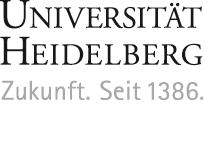Mona Lisa’s Identity Established Beyond Doubt
14 January 2008
Clinching find at Heidelberg University Library establishes the date of Leonardo’s most famous painting and the identity of its model as Lisa del Giocondo – Handwritten note on the margin of an early print removes all doubt
The Mona Lisa, Leonardo da Vinci’s portrait of a young woman, is probably the most famous painting in the world. The identification of its model as Lisa del Giocondo, the wife of the Florentine merchant Francesco del Giocondo, has so far been based on information provided by Giorgio Vasari (1511-1574) in his Lives of the Painters, first published in 1550. Up to now, this has been the only source putting a name to the portrait and providing an approximate dating (between 1503 and 1506), which separates Vasari’s identification of the model from the picture itself by some 50 years. As Vasari is known to have had a faible for anecdotal evidence, doubt has been cast on the reliability of his information, particularly as Leonardo himself makes no reference whatsoever to the Mona Lisa in his drawings or notebooks.
Sparse references in other sources dating from 1517, 1525 and 1540 leave a great deal of scope for interpretation, so that various other theories have been advanced about the identity of the model. One of them suggests that the picture is a portrait of a fictional woman representing Leonardo’s ideal of female beauty.
All doubt about the identity of the Mona Lisa has now been removed by a source lighted upon by Dr. Armin Schlechter when cataloguing an early print in the possession of Heidelberg University Library (signature D 7620 qt. INC). He published this find with a brief commentary in the catalogue for the exhibition of incunabula at the University Library in May 2005. An edition of Cicero printed in 1477 carries a note in the margin by the Florentine official Agostino Vespucci, who compares Leonardo da Vinci with Apelles, a great painter of the classical age, and refers to the fact that Leonardo was working on a portrait of Lisa del Giocondo at the time of writing. Vespucci’s note stems from October 1503, thus allowing an exact dating of the painting and confirming once and for all Vasari’s statement of 1550 identifying it as a portrait of Lisa del Giocondo.
Up to the present, the significance of this find has yet to be fully reflected in responses from art historians. Numerous articles on the subject can safely be expected to materialise in the near future.
Please address any inquiries to
Sabine Häußermann
Public Relations Officer
Heidelberg University Library
phone: 06221/542581
haeussermann@ub.uni-heidelberg.de
Journalists’ inquiries should be addressed to
Dr. Michael Schwarz
Public Information Officer
University of Heidelberg
phone: 06221/542310, fax: 542317
michael.schwarz@rektorat.uni-heidelberg.de
Irene Thewalt
presse@rektorat.uni-heidelberg.de
Sparse references in other sources dating from 1517, 1525 and 1540 leave a great deal of scope for interpretation, so that various other theories have been advanced about the identity of the model. One of them suggests that the picture is a portrait of a fictional woman representing Leonardo’s ideal of female beauty.
All doubt about the identity of the Mona Lisa has now been removed by a source lighted upon by Dr. Armin Schlechter when cataloguing an early print in the possession of Heidelberg University Library (signature D 7620 qt. INC). He published this find with a brief commentary in the catalogue for the exhibition of incunabula at the University Library in May 2005. An edition of Cicero printed in 1477 carries a note in the margin by the Florentine official Agostino Vespucci, who compares Leonardo da Vinci with Apelles, a great painter of the classical age, and refers to the fact that Leonardo was working on a portrait of Lisa del Giocondo at the time of writing. Vespucci’s note stems from October 1503, thus allowing an exact dating of the painting and confirming once and for all Vasari’s statement of 1550 identifying it as a portrait of Lisa del Giocondo.
Up to the present, the significance of this find has yet to be fully reflected in responses from art historians. Numerous articles on the subject can safely be expected to materialise in the near future.
Please address any inquiries to
Sabine Häußermann
Public Relations Officer
Heidelberg University Library
phone: 06221/542581
haeussermann@ub.uni-heidelberg.de
Journalists’ inquiries should be addressed to
Dr. Michael Schwarz
Public Information Officer
University of Heidelberg
phone: 06221/542310, fax: 542317
michael.schwarz@rektorat.uni-heidelberg.de
Irene Thewalt
presse@rektorat.uni-heidelberg.de
Editor:
Email


